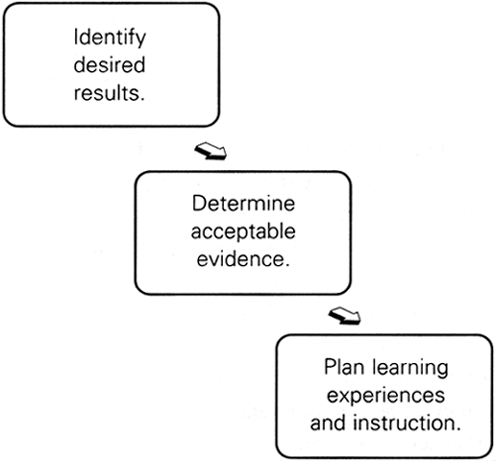
Micro Master LDT100x
UBD

What do I do in each Step?
Below is a short overview of each of the three steps. At the end, we'll explore each step in detail.
Step 1:
Identify desired results
Begin with the end in mind: What are the desired results for the lesson, unit, or exercise? Identifying the specific content knowledge or skill set teachers expect from students helps to narrow focus. Textbooks, the Internet, and the world at large provide such rich content options that it can be difficult to hone in on our exact goals for a lesson.
Identifying the educational priorities of a lesson or unit deliberately narrows content into a manageable stream. “Understandings” and “Essential Questions” help articulate and communicate the educational priorities. This, again, narrows focus and ensures that content is the means, and skill acquisition and transfer are the end. The essential questions should be big ideas, not easily answered, used to drive inquiry of the lesson.
According to the ASCD website, (http://www.ascd.org/publications/books/109004/chapters/What-Makes-a-Question-Essential%A2.aspx) there are 7 elements to make a question essential. Review the page and be sure to keep this points in mind as you write your Essential Questions.
Step 2:
Determine a method of assessment
In the second step, you decide how to assess learning. This assessment goes much deeper than a simple multiple-choice exam. It should measure a person’s ability to attain those educational goals and exhibit high-level learning. Major assessments should examine several of the six key traits of deep learning identified by UbD:
-
Explanation
-
Interpretation
-
Application
-
Perspective
-
Empathy
-
Self-knowledge
Deliberate assessment may not measure every time, but when significant learning needs to be examined, an assessment that requires a combination of these skills can help instructors to know if students understand material enough to transfer their knowledge outside of the classroom.
Step 3:
Plan instruction and learning experiences
Once you have created deliberate goals and identified assessment methods, plan individual learning experiences aligned to the educational goals and assessment with a deliberate focus on how those individual learning experiences support transfer, meaning making, and skill acquisition.
An important final step can be reflection. After the individual lessons or the unit as a whole, it is incredibly important to revisit that first step and measure how effectively the individual learning experiences aligned with the overall goals.